
Marty Barrett played 10 seasons, nine with the Red Sox. He got AL MVP votes in 1986 and won the ALCS MVP during that same, famous October. The infielder hit .433/.514/.500 in the World Series against the Mets. He was superb on defense throughout his MLB tenure and even led the league in sacrifice bunts three seasons in a row.
But Barrett also had another trick up his sleeve. Literally. The second baseman pulled off baseball's hidden-ball trick three times, including twice against the same team in a few weeks' span.
According to many accounts, it's the most times a player has completed the play during their career in the last half-century. Barrett is maybe the greatest perpetrator of baseball's sneakiest out in the game's modern history.
"I remember thinking to myself, 'That really worked,'" Barrett told me in a recent phone call. "I couldn't stop smiling as a I threw the ball back to the pitcher."
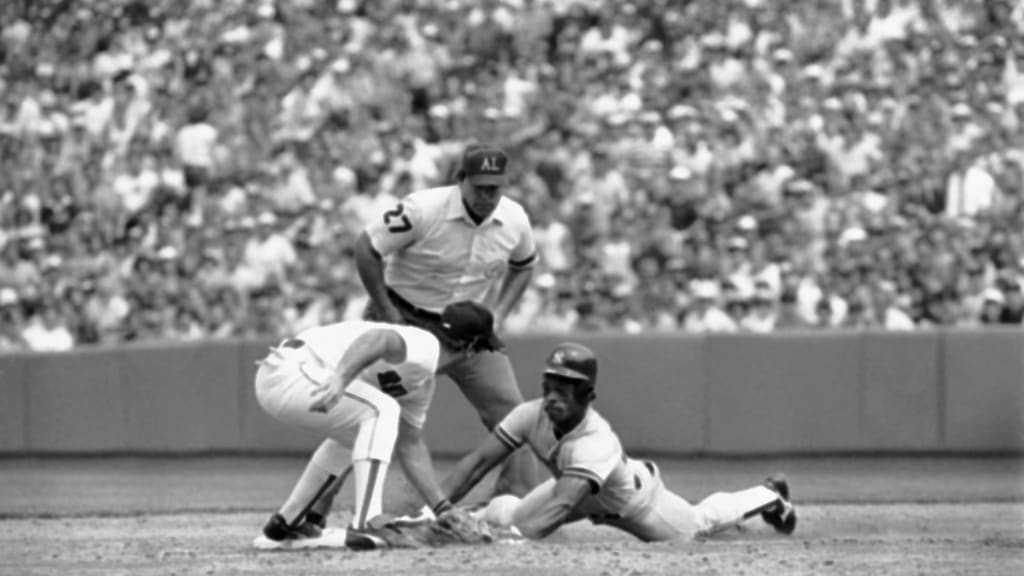
Barrett, of course, wasn't the first to ever pull off the hidden-ball trick -- but it is exceedingly rare.
Historians believe the play has been pulled off just 250-300 times in 152 Major League seasons. Many occurrences seem to have happened in the early 1900s, you know, when rules weren't as rigid, players were part-time thieves and drank beer midway through games.
The Tigers' Bill Coughlin pulled it off a record nine times, claiming it was because he wore a special, larger mitt (he was able to do so because he shot off his index finger with a revolver as a toddler). He even executed the feat during the first inning of the 1907 World Series. The third baseman hid the ball under his armpit after it was thrown in, the pitcher pretended he had received the ball from his infielder and Coughlin tagged out an unsuspecting Jimmy Slagle once he took his lead. Umpire Hank O'Day apparently followed up his, “You’re out!" with a "Where did the ball come from?”
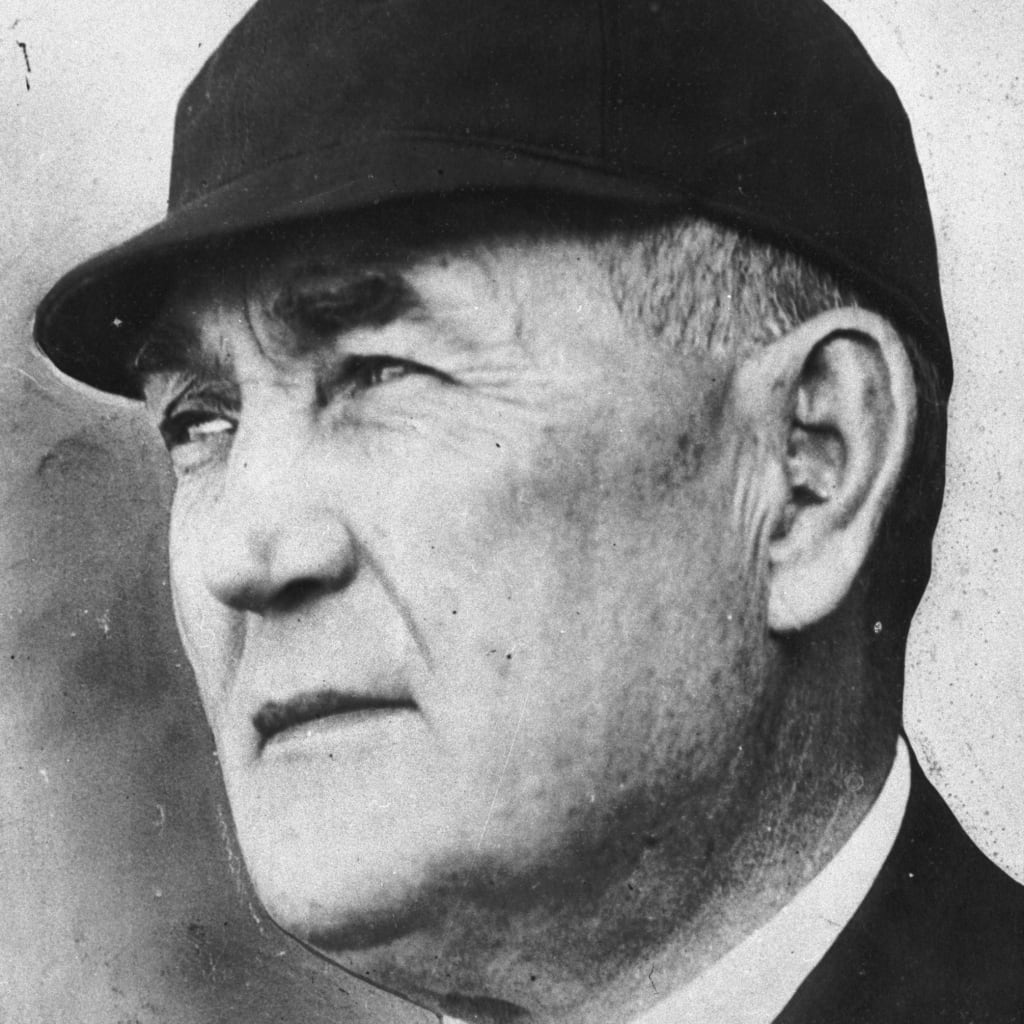
Hall of Famer and "most intelligent man in baseball" John Montgomery Ward was caught in 1893 and, in 1915, a hidden-ball trick at second base even resulted in jail time. Reds manager Buck Herzog was so upset that his player got called out by the home-plate umpire that a fist-fight broke out and both men were cited for disturbing the peace.
But all of this happened decades before Barrett got into pro baseball as a Minor League player with the Red Sox. He learned the trade from one person, a man he says taught the play to the entire Red Sox organization.
"I learned it during my first Spring Training before I ended up going to Double-A in Bristol, Conn.," Barrett told me. "It was a guy named Buddy Hunter, who used to do it all the time."
Hunter was a player at Triple-A Pawtucket that spring and confirmed he did indeed teach Barrett the trade of the trick. And yes, he did have his own long history of fooling unsuspecting runners.
"I did it a lot," Hunter said to me over the phone. "I had to do it 15 times, probably. All in the Minors, I didn't have the chance to do it in the big leagues." (Barrett also told me he did it about 10 times in the Minors.)
Both being second basemen, Hunter and Barrett used the same basic formula for turning the hidden-ball trick: It was predominantly done after a sacrifice bunt.
After covering first for the out, they'd hold onto the ball in their glove -- cupping it against their side. The first-base coach would be congratulating the hitter for laying down a great bunt, the third-base coach would be talking to the runner who got to second, but nobody on the other team would be paying attention to where the ball went. Hunter/Barrett would walk back over toward second, slyly let the umpire know they still had the ball (this is very important so the umpire is watching) and, generally, pitchers would know what their second baseman was doing. They'd pretend they had the ball and get ready to take the mound again. Here's a handy diagram of how it all works.
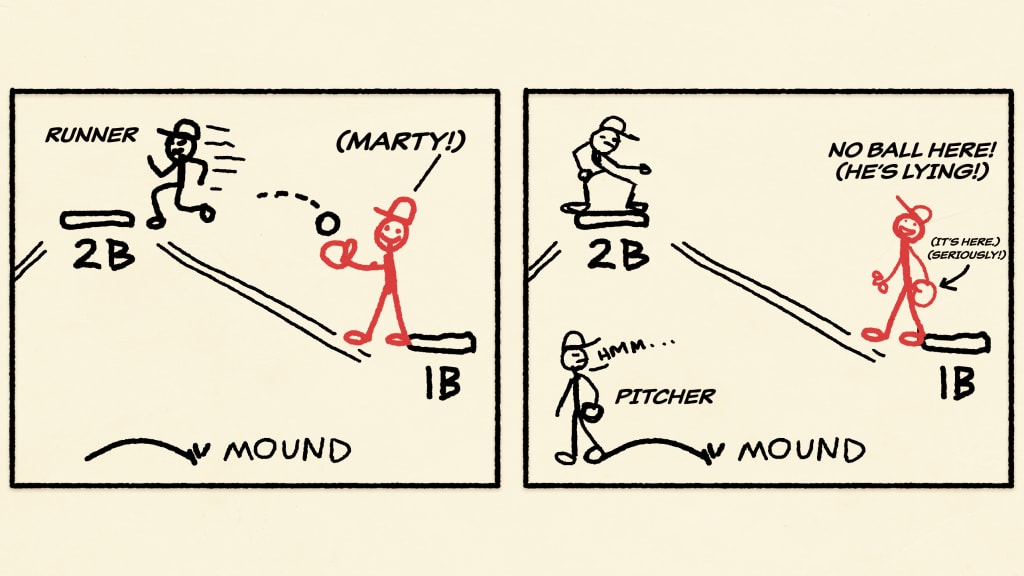
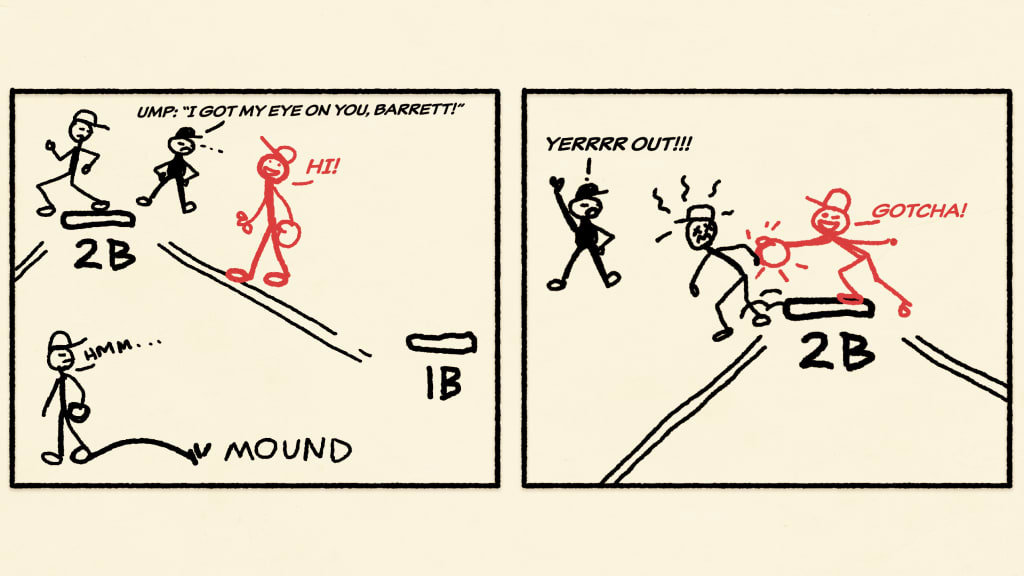
"I just realized early on in my career that nobody was really paying attention to me," Hunter told me. "I'd talk to [the runner] a little while, BS with him, you know, how's the family, you got any kids. He'd step off to talk to me and I'd tag him out."
"Nobody was watching me," Barrett said. "So, I'd just reach over and tag him out."
Did opposing players or coaches get mad that they were tricked? Yes, of course they did.
In Barrett's case, as we mentioned above, he pulled it off once against Baltimore and twice against the same club: the Angels. That's where things got a little testy.
The first time was in California during a game on July 7, 1985 -- using the sacrifice-bunt technique. Barrett tagged Bobby Grich out when he drifted off second base.
"I actually tagged him and I apologized like, 'Sorry, Bobby,'" Barrett laughed. "And he was kinda like, 'Ugh.'"
And then, as the Angels were heading to Boston to play the Sox on July 21, third baseman Doug DeCinces was ribbing Grich about getting tricked -- saying he better not get caught again. DeCinces should've been more worried about himself.
"DeCinces hit a double to the left center-field gap," Barrett recalled. "[The ball] got in and I held it. I can't remember if I tagged him or I flipped that one over to our shortstop, but I remember when he got tagged out we were running off the field because it was the third out. He was yelling at the umpires, 'You gonna let them get away with that Little League bulls***!'"
Grich, who was friends with Boston's Bill Buckner, told Buckner that was the greatest thing that could have happened.

Hunter had a few opposing teams get mad at him during his 15 tricks, but the angriest was someone who set an MLB record for being angry.
"Bobby Cox," Hunter said. "We were playing the Braves and Bobby Cox was a manager at Richmond. I pulled it off in Pawtucket and he's coaching third base. He knew I did it. He knew I pulled off the hidden-ball. When I tagged the guy out, [Cox] was so mad that he went back to the bench, grabbed an aluminum bat and, in Pawtucket, they have this steel post that holds up the net in back of home plate. And he hit that steel post about 10 times with the aluminum bat. It just ringed throughout the park, I'll never forget it."
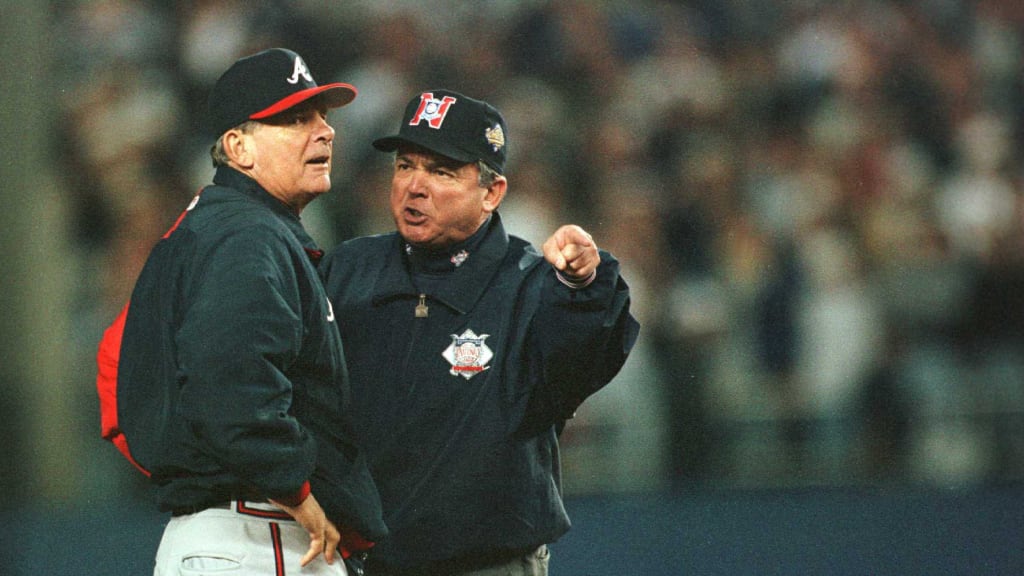
Hunter said he also pulled it on the Orioles' Billy Hunter during Spring Training one year and the O's infielder yelled at Buddy that his pitcher was going to plunk him the next time up. That never happened.
Barrett was also afraid of retaliation in the batter's box, but found out teams never really thought about doing that.
"All the pitchers and relievers on our team would always say, 'No, no, we talked to the opposing pitchers and they're cracking up when you do it,'" Barrett told me.
It may seem like the hidden-ball trick would become less common with so many cameras and coaches these days, but Barrett said its use seems about the same as it did during his time in the Majors. The thing that stopped him from doing it more was players or umpires calling for time immediately after a play.
"I don't know if the umpires were worried about not being aware of it and them looking bad if they didn't know that I had it," Barrett said. "But every time I held the ball, the umpires would call a timeout ... Timeout, you can't pull it off."
Still, you see the play every so often in the big leagues.
Mike Lowell did it at third base back in 2005 (he accomplished it twice during his career). He gave a full explanation of the play years later.
The Blue Jays caught a dumbfounded Todd Frazier in 2017.
Wily veteran Todd Helton got Matt Carpenter with the ole fake-throw back to the pitcher during his final season. After the game, he said, "I've been wanting to do that for 17 seasons. Now I can cross that off my bucket list."
Ozzie Guillen got caught a record THREE times during his career. A high-school team even went viral with the trick at third a few weeks ago to help it win a game.
The play may be seen by some as unfair or, as the Boston Globe put it in 1908, "The meanest thing known to baseball," but when it works, it's great. It's stealing an out in a key spot.
"The pitchers loved it," Barrett laughed. "Think about it. Typically, there's a runner in scoring position and he's out of it or even out of the inning. Our pitchers loved it."
"I wouldn't do it until late in the game, in a bunting situation, when the runner really meant something and they had to bunt someone over," Hunter told me. "When it's either the winning or tying run. I saved a lot of games because of the hidden-ball trick."
It's also just fun and different and a welcome respite in the middle of a tense, competitive baseball environment. The fans love it and the team reaction -- on both sides of the ball -- is always fantastic.
Here's to hoping it never goes away.
